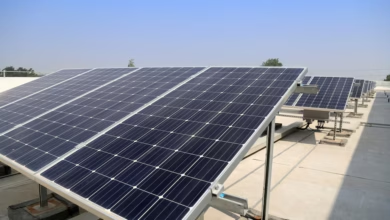10 Ways South African SMEs Can Reduce Energy Costs

As energy costs continue to rise in South Africa, small and medium-sized enterprises (SMEs) face increasing pressure to manage their expenses. Reducing energy consumption not only lowers costs but also contributes to environmental sustainability. Here are ten practical ways South African SMEs can reduce energy costs while maintaining productivity.
1. Conduct an Energy Audit
Before implementing changes, conduct an energy audit to identify areas where energy is being wasted. This assessment helps pinpoint inefficient processes and equipment, providing a clear starting point for improvements.
2. Upgrade to Energy-Efficient Equipment
Invest in energy-efficient appliances and equipment. Look for products with a high energy efficiency rating, such as LED lighting, Energy Star-rated computers, and energy-efficient HVAC systems. Though the initial investment may be higher, the long-term savings on energy bills will be significant.
3. Implement Smart Lighting Solutions
Switch to smart lighting solutions to optimize energy use:
- LED Bulbs: Replace incandescent bulbs with LED ones, which use up to 75% less energy and last significantly longer.
- Motion Sensors: Install motion sensors to ensure lights are only on when needed, especially in low-traffic areas like storerooms and restrooms.
- Daylight Harvesting: Utilize natural light by installing skylights or using daylight sensors to adjust artificial lighting according to the available daylight.
4. Optimize Heating and Cooling
Heating and cooling can account for a large portion of energy use. To reduce costs:
- Regular Maintenance: Ensure HVAC systems are regularly maintained and serviced to operate efficiently.
- Thermostat Settings: Use programmable thermostats to adjust temperatures according to working hours, reducing heating or cooling during non-peak times.
- Insulation: Improve insulation in walls, roofs, and windows to maintain a stable indoor temperature and reduce the load on heating and cooling systems.
5. Encourage Energy-Saving Practices
Promote a culture of energy efficiency among employees:
- Awareness Campaigns: Educate staff on the importance of energy conservation and provide tips on reducing energy use.
- Incentives: Offer incentives for teams that achieve significant energy savings.
6. Utilize Renewable Energy
Consider investing in renewable energy sources:
- Solar Power: Install solar panels to generate your own electricity, reducing dependence on the grid and lowering energy costs.
- Government Incentives: Take advantage of government incentives and tax breaks for adopting renewable energy solutions.
7. Implement Energy Management Systems
Energy management systems (EMS) can help monitor and control energy usage:
- Real-Time Monitoring: Use EMS to track energy consumption in real time and identify areas for improvement.
- Automated Controls: Implement automated controls for lighting, HVAC, and other systems to ensure efficient operation.
8. Reduce Standby Power Consumption
Standby power, also known as phantom load, can contribute significantly to energy costs:
- Unplug Devices: Encourage employees to unplug chargers, printers, and other devices when not in use.
- Power Strips: Use power strips with on/off switches to easily disconnect multiple devices at once.
9. Optimize Production Processes
Streamline production processes to minimize energy use:
- Process Audits: Regularly review processes to identify energy-intensive steps and explore more efficient alternatives.
- Equipment Scheduling: Schedule energy-intensive tasks during off-peak hours to take advantage of lower electricity rates.
10. Regularly Review Energy Contracts
Regularly review energy contracts to ensure you are getting the best possible rates:
- Compare Suppliers: Shop around for competitive rates from different energy suppliers.
- Negotiation: Negotiate contracts and consider fixed-rate plans to protect against future price increases.
By implementing these strategies, South African SMEs can significantly reduce their energy costs, improve operational efficiency, and contribute to a more sustainable future. While some measures may require initial investments, the long-term benefits in cost savings and environmental impact make them worthwhile endeavors. Prioritizing energy efficiency is not only good for the bottom line but also aligns with global efforts toward a greener planet.




